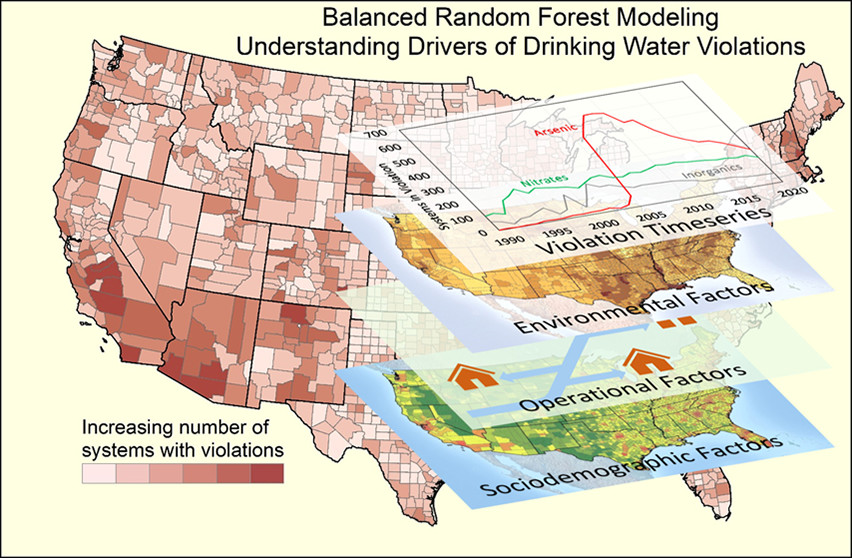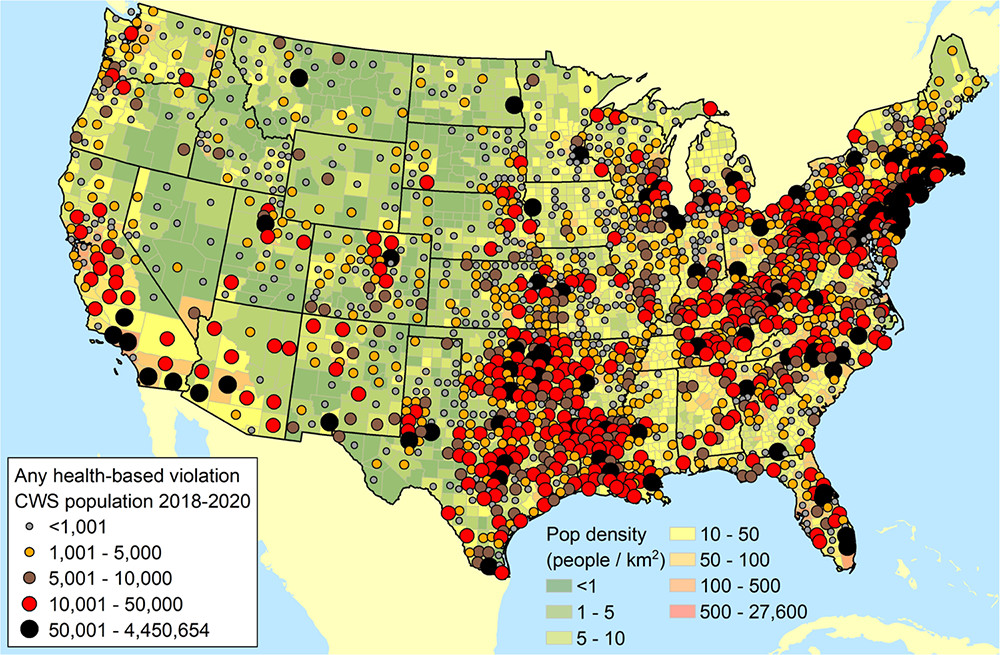Drivers of Spatiotemporal Variability in Drinking Water Quality in the United States
Bridget R. Scanlon, Sarah Fakhreddine, Robert C. Reedy, and John G. Malito
Environmental Science and Technology, https://pubs.acs.org/doi/full/10.1021/acs.est.1c08697
Research Supported by Texas Commission on Environmental Quality, EPA, and Fisher Foundation.

Figure 1. Base map shows county-level data on community water systems with any health-based violation related to environmental, operational, and sociodemographic factors.
Study Summary
About one in every 10 people across the US experience a health-based violation of drinking water quality; however, the new US water infrastructure funding ($50 billion) provides an opportunity to address these issues. The objective of this study was to examine environmental, operational, and sociodemographic drivers of spatiotemporal variability in drinking water quality violations. Geospatial analysis and data analytics were used to evaluate drivers of health-based violations, including environmental (e.g., land use, climate), operational (e.g., water source, system size), and sociodemographic (e.g., social vulnerability, rurality) characteristics using violation data from the Safe Drinking Water Information System (SDWIS) database from 2018 – 2020.
Results show that health-based violations are found primarily in small systems in rural and suburban settings. These violations are dominated by disinfection and disinfection byproduct rule (DBPR) violations related to treatment in the Southcentral US extending to the Northeast. Data analytics reveal the importance of operational (treatment) and environmental (temperature), and sociodemographic factors (rural and suburban areas). The 2nd highest category of violations is inorganics found primarily in the semiarid Southwest and Southcentral US with naturally occurring arsenic and radionuclides linked to geogenic contaminant mobilization and nitrates related to nonpoint-source agricultural sources. Low levels of nitrate in the Midwest and Southeast US are surprising and attributed to denitrification.
Why is this research important and why do the results matter?
- Understanding the causes of drinking water quality violations is essential to developing effective solutions.
- Although water quality violations are often thought to be linked to point-source pollution (e.g., Superfund sites), the leading cause of violations was found to be disinfectant byproducts from treatment.
- The 2nd most widespread contaminant group is inorganics, related to naturally occurring geogenic contamination (arsenic and radionuclides) and non-point source agricultural contamination (nitrates).
- The pervasive nature of many water quality violations (e.g., geogenic contaminants) in water-scarce regions suggests they most likely require treatment systems for mitigation due to the lack of alternative water sources.

Figure 2. Spatial variability in any health-based community water system (CWS) violation (2018 – 2020) overlain on county-level population densities. Circles of different colors represent populations served by CWSs at the county level.